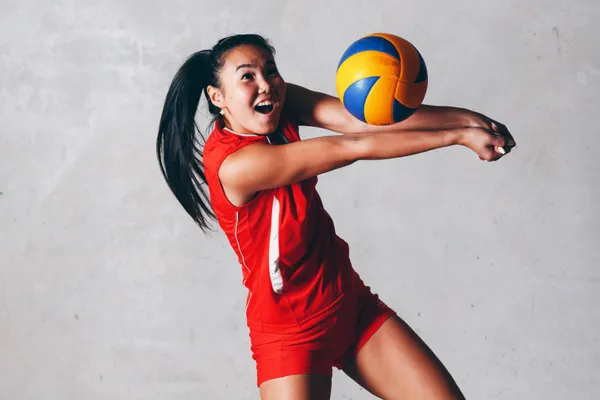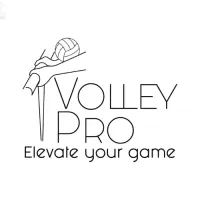
Read Our Blogs

Volleyball Drills for Solo Practice: Improving Your Skills on Your Own
Volleyball is a team sport, but that doesn't mean you can't improve your skills on your own. Solo practice is a valuable way to refine your technique, build strength and endurance, and develop a deeper understanding of the game. Whether you're limited by time, space, or access to a court, there are many effective drills you can do by yourself to become a better volleyball player.
Why Solo Practice Matters:
Skill Refinement: Solo practice allows you to focus on specific skills and techniques, breaking them down and practicing them repeatedly until they become ingrained in your muscle memory. This can lead to improved consistency, accuracy, and efficiency in your movements.
Increased Ball Control: Many solo drills involve repetitive contact with the ball, which can significantly improve your ball control and hand-eye coordination. This enhanced ball control can translate to better performance in all aspects of the game, from serving and passing to setting and attacking.
Fitness and Conditioning: Solo practice can also be used to improve your fitness and conditioning. You can incorporate drills that focus on strength training, plyometrics, agility, and endurance, helping you to build the physical foundation needed for volleyball success.
Mental Focus: Solo practice can help you to develop mental focus and concentration. By practicing drills that require precision and control, you can train your mind to stay present and focused on the task at hand. This mental focus can translate to better performance during games and competitions.
Convenience and Flexibility: Solo practice offers convenience and flexibility, allowing you to train on your own schedule and at your own pace. You can fit in short practice sessions whenever and wherever it's convenient for you, maximizing your training time and improving your skills even when you don't have access to a court or teammates.
Serving Drills:
Target Practice: Find a wall or a large open space and practice serving to different targets. Focus on accuracy, consistency, and developing different types of serves, such as the underhand serve, the overhand serve, and the jump serve. Use chalk or tape to mark targets on the wall, or use cones or other objects to create targets in an open space. Challenge yourself by aiming for smaller targets or varying the distance and angle of your serves.
Toss and Serve: Practice your toss by tossing the ball consistently in the air and then serving it. Focus on the height, trajectory, and spin of your toss. A consistent toss is crucial for a successful serve. Practice tossing the ball to the same height and location each time, and then work on incorporating different types of spins, such as topspin or float serve.
Footwork Drills: Practice your serving footwork, including your approach, jump, and landing. Visualize serving the ball over the net and into the court. This will help you to develop the muscle memory and coordination needed for a powerful and accurate serve.
Passing Drills:
Wall Passing: Pass the ball against a wall, focusing on your platform, footwork, and hand positioning. Vary the distance and angle of your passes to challenge yourself. Use a wall that is smooth and free of obstructions. Start with basic forearm passes, focusing on creating a flat platform with your forearms and contacting the ball in the center of your platform. Gradually increase the difficulty by passing the ball from different distances and angles, and by incorporating different types of passes, such as overhead passes or diving digs.
Self-Toss Passing: Toss the ball to yourself and practice passing it to different targets. Focus on controlling the ball and directing it to your desired location. You can use cones or other objects to create targets, or simply visualize a target on the floor or wall. Practice passing the ball with both your forearms and overhead, and work on controlling the height and distance of your passes.
Floor Drills: Practice your footwork and agility by shuffling, crossover stepping, and diving for imaginary balls on the floor. This will help you to develop the quickness and agility needed to react to the ball and get into position for a pass. You can also incorporate drills that involve jumping and landing, such as jump stops and lateral jumps.
Setting Drills:
Wall Setting: Set the ball against a wall, focusing on your hand positioning, footwork, and timing. Vary the height and distance of your sets. Use a smooth wall that is free of obstructions. Start with basic sets, focusing on contacting the ball with your fingertips and extending your arms fully. Gradually increase the difficulty by setting the ball to different heights and distances, and by incorporating different types of sets, such as quick sets or high sets.
Self-Toss Setting: Toss the ball to yourself and practice setting it to different heights and locations. Focus on controlling the ball and delivering it with accuracy. You can use cones or other objects to create targets, or simply visualize a target on the floor or wall. Practice setting the ball with different hand positions and speeds, and work on controlling the height and distance of your sets.
Visualization: Visualize setting the ball to your hitters, imagining different scenarios and practicing your decision-making skills. This will help you to develop your court awareness, anticipate your hitters' movements, and make quick and effective decisions during a game.
Attacking Drills:
Approach and Jump: Practice your approach and jump without a ball, focusing on your footwork, timing, and arm swing. Visualize hitting the ball over the net and into the court. This will help you to develop the muscle memory and coordination needed for a powerful and accurate attack. Start with a three- or four-step approach, focusing on your footwork pattern and timing your jump to coincide with the peak of your approach.
Hitting Against a Wall: Hit the ball against a wall, focusing on your arm swing, contact point, and follow-through. Use a smooth wall that is free of obstructions. Start with basic hitting motions, focusing on contacting the ball with the palm of your hand and snapping your wrist over the ball. Gradually increase the power and speed of your hits as you become more comfortable.
Visualization: Visualize hitting the ball over the net and into the court, imagining different scenarios and practicing your shot selection. This will help you to develop your court awareness, anticipate the blockers' movements, and make quick and effective decisions during a game.
Blocking Drills:
Footwork Drills: Practice your blocking footwork, including shuffling, crossover stepping, and jumping. This will help you to move quickly and efficiently along the net to block different types of hits. Use cones or markers on the floor to simulate the net and practice shuffling and crossover stepping between them.
Hand Positioning: Practice your hand positioning for different types of blocks, such as single blocks, double blocks, and line blocks. Focus on penetrating the net with your hands and creating a solid blocking surface. You can practice this against a wall or by visualizing the net and the hitter's approach.
Visualization: Visualize blocking different types of hits, imagining different scenarios and practicing your timing and positioning. This will help you to anticipate the hitter's movements, time your jump correctly, and position your hands effectively to block the ball.
Volley Pro: Enhancing Your Solo Practice
Volley Pro can be a valuable tool for enhancing your solo practice. The platform's dynamic surface and integrated training tools can be used for a variety of drills and exercises, helping you improve your skills and fitness on your own.
Here's how Volley Pro can enhance your solo volleyball practice:
Passing and Digging: The unstable surface of the Volley Pro platform challenges your balance and coordination, making it ideal for practicing passing and digging skills. The platform's movement simulates the unpredictable nature of the ball, forcing you to react quickly and adjust your platform to make accurate passes and digs.
Setting: The platform can also be used for setting drills, challenging your hand-eye coordination and timing. The instability of the platform requires you to engage your core and stabilizer muscles, improving your balance and control while setting.
Attacking: You can use Volley Pro to practice your attacking approach and jump, focusing on your footwork, timing, and arm swing. The platform's dynamic surface adds an element of challenge, forcing you to adjust your movements and maintain balance.
Blocking: Volley Pro can also be used for blocking drills, challenging your footwork, agility, and reaction time. Practice shuffling and crossover stepping on the platform to simulate blocking movements along the net.
Conditioning: The platform can be used for a variety of conditioning exercises, such as plyometrics, agility drills, and core work. This can help you to improve your strength, power, endurance, and agility, which are all essential for volleyball performance.
By incorporating these solo drills into your training regimen and utilizing Volley Pro's versatility, you can become a more well-rounded and skilled volleyball player, even when you're practicing on your own. Solo practice is a valuable tool for improving your technique, building your fitness, and developing your mental game, allowing you to maximize your potential and achieve your volleyball goals.
Reserve your Volley Pro now and take your solo practice to the next level!

Reliable, professional pressure washing services for pristine results.
Copyright Volley Pro 2025. All rights reserved
